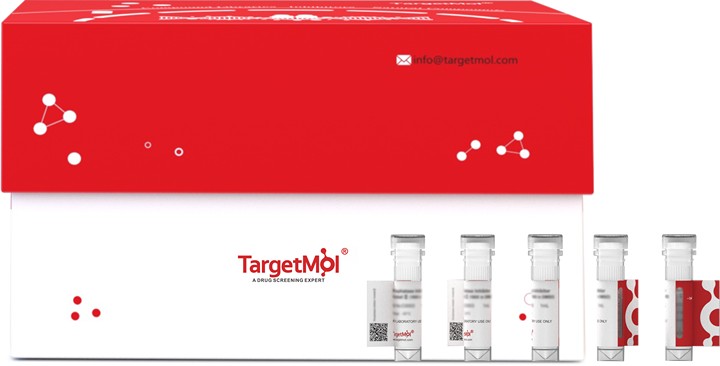Shopping Cart
- Remove All
 Your shopping cart is currently empty
Your shopping cart is currently empty

AtAER Protein, Arabidopsis thaliana, Recombinant (His & SUMO) is expressed in E. coli expression system with N-6xHis-SUMO tag. The predicted molecular weight is 54.1 kDa and the accession number is Q39172.

| Pack Size | Price | Availability | Quantity |
|---|---|---|---|
| 20 μg | $360 | 20 days | |
| 100 μg | $745 | 20 days | |
| 1 mg | $2,530 | 20 days |
| Biological Activity | Activity has not been tested. It is theoretically active, but we cannot guarantee it. If you require protein activity, we recommend choosing the eukaryotic expression version first. |
| Description | AtAER Protein, Arabidopsis thaliana, Recombinant (His & SUMO) is expressed in E. coli expression system with N-6xHis-SUMO tag. The predicted molecular weight is 54.1 kDa and the accession number is Q39172. |
| Species | Arabidopsis thaliana |
| Expression System | E. coli |
| Tag | N-6xHis-SUMO |
| Accession Number | Q39172 |
| Amino Acid | MTATNKQVILKDYVSGFPTESDFDFTTTTVELRVPEGTNSVLVKNLYLSCDPYMRIRMGKPDPSTAALAQAYTPGQPIQGYGVSRIIESGHPDYKKGDLLWGIVAWEEYSVITPMTHAHFKIQHTDVPLSYYTGLLGMPGMTAYAGFYEVCSPKEGETVYVSAASGAVGQLVGQLAKMMGCYVVGSAGSKEKVDLLKTKFGFDDAFNYKEESDLTAALKRCFPNGIDIYFENVGGKMLDAVLVNMNMHGRIAVCGMISQYNLENQEGVHNLSNIIYKRIRIQGFVVSDFYDKYSKFLEFVLPHIREGKITYVEDVADGLEKAPEALVGLFHGKNVGKQVVVVARE |
| Construction | 1-345 aa |
| Protein Purity | > 90% as determined by SDS-PAGE. |
| Molecular Weight | 54.1 kDa (predicted) |
| Endotoxin | < 1.0 EU/μg of the protein as determined by the LAL method. |
| Formulation | Tris-based buffer, 50% glycerol |
| Reconstitution | A Certificate of Analysis (CoA) containing reconstitution instructions is included with the products. Please refer to the CoA for detailed information. |
| Stability & Storage | Lyophilized powders can be stably stored for over 12 months, while liquid products can be stored for 6-12 months at -80°C. For reconstituted protein solutions, the solution can be stored at -20°C to -80°C for at least 3 months. Please avoid multiple freeze-thaw cycles and store products in aliquots. |
| Shipping | In general, Lyophilized powders are shipping with blue ice. Solutions are shipping with dry ice. |
| Research Background | Involved in the detoxification of reactive carbonyls. Acts on lipid peroxide-derived reactive aldehydes. Specific to a double bond activated by an adjacent carbonyl group. Can use both quinones and diamide as substrates, but not menadione, ferricyanide or phylloquinone. Can use 4-hydroxy-(2E)-nonenal (HNE), 4-hydroxy-(2E)-hexenal (HHE), (2E)-nonenal, (2E)-hexenal, (2E)-pentenal, propenal (acrolein), 3-buten-2-one and 3-penten-2-one, but not (R)-(-)-carvone, n-nonanal, n-hexanal, (3Z)-hexanal, cyclohex-2-en-1-one or 12-oxo phytodienoic acid (OPDA) as electron acceptors. Catalyzes the reduction of the alpha,beta-unsaturated bond of 2-alkenals, of lipid peroxide-derived oxenes 9-oxo-10(E),12(Z)-octadecadienoic acid (9-KODE) and 13-oxo-9(Z),11(E)-octadecadienoic acid (13-KODE), as well as 4-oxo-(2E)-nonenal and 4-hydroxynonenal. Can use 12-oxo-10(E) dodecanoate (traumatin), trans-1,3 diphenyl-2-propenone, trans-1,4-diphenyl-2-butene-1,4-dione, 9-oxo-12,13-epoxy-(10E)-octadecenoic acid (trans-EKODE-1b) and 9,13-dihydroxy-10-oxo-11-octadecenoic acid as substrates. Catalyzes the reduction of the 7-8 double bond of phenylpropanal substrates, such as p-coumaryl aldehyde and coniferyl aldehyde (in vitro). Has activity towards toxic substrates, such as 4-hydroxy-(2E)-nonenal (in vitro). May play a distinct role in plant antioxidant defense and is possibly involved in NAD(P)/NAD(P)H homeostasis. |

Copyright © 2015-2025 TargetMol Chemicals Inc. All Rights Reserved.